Sporting Clays on the Bourbon Trail: Part VIII, Keswick Hall and Central Virginia Sporting Clays
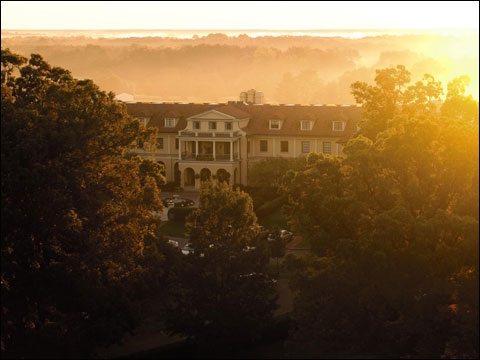
The itinerary was ambitious – eight days, seven posh sporting clays venues, 13 flats of shells and eight bourbon distilleries. Porsche had loaned us a 2011 Cayenne S SUV powered by a 400-horsepower V8 behemoth, while Connecticut Shotgun Manufacturing Co. supplied one of their marvelous A-10 American sidelock over/under shotguns. This is the final installment.
We savored that 150-mile stretch of Interstate from Primland to the last destination in our Sporting Clays on the Bourbon Trail saga – Keswick Hall.
The 2011 Cayenne S on loan to us from Porsche had become a coveted traveling companion, and so this smooth, leisurely drive that took us past the Virginia towns of Waynesboro, Lexington, Fincastle and Christianburg assumed a melancholy air knowing that – after eight days together – this $93,000, 400-horsepower, all-wheel-drive, ultra-modern SUV would remain ours for only the next 48 hours.
Likewise, the marvelous A-10 American sidelock that we enjoyed at extraordinary sporting clays venues would be packed up and returned to Connecticut Shotgun Manufacturing Company when we reached home.

As we cruised southeasterly, coddled by the high-performance seats of the Porsche Cayenne S, we gradually succumbed to the climatic inevitability that accompanies the final chapter of a memorable road trip.
The hustle of barnstorming seven luxurious sporting clays destinations was now mostly behind us. The day-to-day rush would often distract us from the wonders of the Porsche Cayenne S. But now, with the finish of the trip a foregone conclusion, we reacquainted yourselves with this beautiful machine that devours the road like a video-game assassin.
The black leather interior with aluminum accents, the sumptuous GT steering wheel, the orthopedic seats, BOSE Surround Sound, and the atmospheric mechanical timbre: those exquisite whispers from the V8 and 20-inch tires that transmitted profound and extraordinary competence and delight.
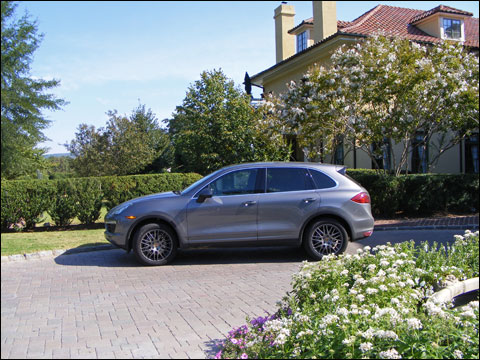
Pulling into the driveway of Keswick Hall, though, a different aspect of the Porsche Cayenne S emerges – or more accurately, it appeals to that sliver of ego that always wants to make a grand entrance in a cool car.
Arriving at Keswick Hall is like stepping into the New South, as some people call the region’s renaissance of the past twenty years.
The guests are younger, affluent families that appear just as comfortable rolling up in Jeep Wrangler as in a Mercedes Benz ML 550 SUV.
There’s a sensibility that the people busy with children, luggage and vehicles pride themselves as the rightful heirs to Thomas Jefferson’s Monticello, just five miles away in the lovely Blue Ridge Mountains.
Keswick Hall could very well have served as the cornerstone of the New South.

The original villa had been built in 1912 by a gentleman farmer named Robert B. Crawford after he and his wife had returned fully inspired from their honeymoon in Italy. At 8,000 square feet, the 19th century stucco masterpiece was distinguished by a tiled roof, ornate ceiling moldings and a grand staircase. After Mr. Crawford suddenly died in 1919, the property changed hands between five different owners over the ensuing 35 years.
Starting in 1948, Villa Crawford became the Keswick Country Club for the next 42 years. Amenities such as a golf course, ice skating rink, gardens, tennis courts and swimming pool served the local high society. The Keswick Country Club became somewhat notorious in the 1960s as the first to integrate its membership.
The club was purchased in 1990 by Sir Bernard Ashley, widower of designer Laura Ashley, for $5 million. Sir Ashley spent an additional $25 million converting it to a grand country manor hotel as well as acquiring an adjacent 600 acres. He commissioned Arnold Palmer to redesign the golf course.
In 1999 the Orient Express Company purchased the 48-room Keswick Hall for $13.5 million and spent millions more refurbishing the guest rooms, public areas and club house. Today, Keswick Hall features an 18-hole golf course, five lighted tennis courts, three pools, fitness center, luxury spa, hiking, cycling and fishing on the property’s Broadmoore Lake.
Sporting clays, meanwhile, is available off-site at Central Virginia Sporting Clays in Palmyra, Virginia – a 30-minute drive to the south. As part of the relationship with Central Virginia Sporting Clays, the concierge at the Keswick made reservations for us to shoot at 10:00 the following morning.
A bellman unloaded the Porsche Cayenne S, including our shotguns, and accompanied us up to a top-floor room at the end of the hallway. With a pitched ceiling and dormer windows, the space seemed modeled on a dollhouse. Powder blue and white were the prevailing colors other than the period wall paper. Antiques adorned the room, including an armoire that served as closet. A bottle of local wine and a cheese plate waited on a table. The room exuded a bed and breakfast sensibility.
As dinner time rolled around, we opted for cocktails and appetizers over a full meal. We found a table on the terrace of Fossett’s Restaurant in the hotel. A congenial buzz from fellow patrons accompanied a pastel sunset over the golf course and the leafy mountains beyond. A last-quarter moon was on the rise.
We each ordered a glass of 2005 Trentadue Old Patch Zinfandel from Sonoma. The wine started with a smooth front, not too spicy, and finished smooth and dry. It went well with the cornmeal-crusted calamari and blue-crab chopped salad that we shared.
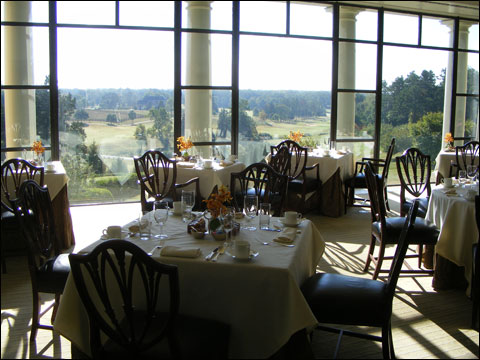
It was back to Fosset’s Restaurant the next morning for breakfast – this time inside the spacious dining room bright and sunny from the wall of windows that our table faced. I had ordered the Keswick Benedict: poached eggs on a crab cake covered with Béarnaise sauce. My traveling companion chose Belgian Waffles with macerated berries, maple syrup, housemade breakfast sausage and whipped quark, which is a variation of a yogurt-sour cream topping. The black coffee was delicious. After a relaxed, big meal, we were ready to shoot.
Central Virginia Sporting Clays was a 30-minute drive south along scenic back roads. From the final stretch along Branch Road, you turn onto a rough gravel road through trees until you reach the mobile-home clubhouse of the sporting-clays facility. The only toilet was in a warehouse on the property. Some heavy equipment was still strewn around the parking lot and five stand, as owner Brad Landseadel continues to make improvements. He has only a few golf carts. Fortunately, the concierge at Keswick Hall had reserved one for us.
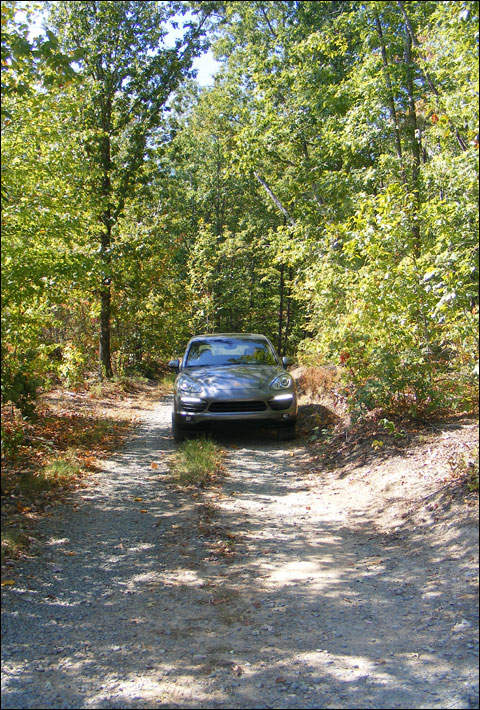
Despite first impressions, Central Virginia Sporting Clays is frequented by groups such as the GRITS (Girls Really into Shooting) and the Virginia Vintagers. On the day we arrived the targets had been set for a so-called Fun Shoot Tournament on the 13-station course – making them more challenging than usual.
The Connecticut Shotgun A-10 American moved handily through the targets. The A-10 America is the successor to the popular RBL series of side-by-side boxlocks. Like the RBL, the A-10 American is made entirely in the company’s factory located in New Britain, Connecticut. Otherwise, the A-10 American is a complete departure from the RBL.
The A-10 American is a four-pin sidelock over/under – a rarity for US shotgun makers that favor the over/under boxlock design. The A-10 American takes aim at the more expensive Beretta SO family, another example of sidelock over/unders that you’ll also see from Europe’s best including Purdey and Holland & Holland.
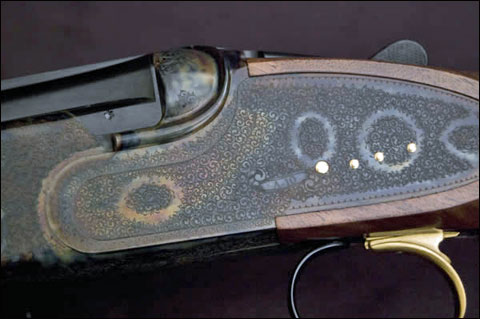
Whether or not a boxlock or sidelock is superior is always the fodder of spirit-laden conversations long into the evening. For traditionalists, though, sidelocks are considered the superior bird gun. With a lower profile (and some say better trigger pulls), the European-born sidelocks of yore continued through the generations as the upland weapon of choice. Moreover, the removable side plates of a sidelock give engravers a larger surface than a boxlock to ply their craftsmanship. Case in point, the single-trigger A-10 American I shot was the premium Rose & Scroll Edition that includes a 3X walnut upgrade. The well-figured amber wood against the case-colored receiver possessed a lush presence that surpassed the $10,000 starting price.
Cosmetics aside, the A-10 American continued to perform flawlessly during our road trip. Some sporting clays courses we shot were certainly easier than others, as to be expected when you shoot at high-end resorts that encourage guest participation and prices higher than you’re accustomed to paying at home. Central Virginia Sporting Clays had always been set for experienced shooters, but the Fun Shoot presentations would ratchet up the difficulty.
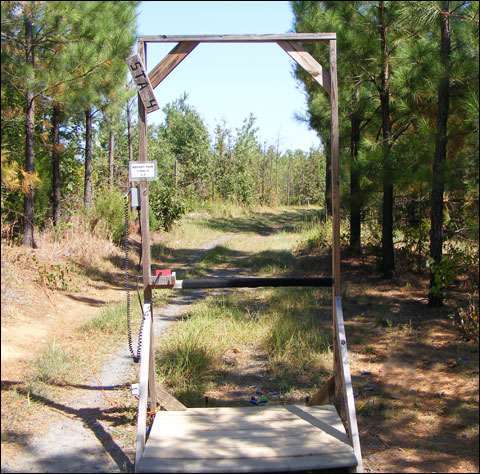
As you’d expect from the heavy equipment, the course is carved out of thick woods – meaning that Mr. Landseadel will give you a short window to see the target whenever possible if you can get a bead on the target in the low and mottled light of the canopy. Since the A-10 American is bird gun with speedy reflexes for flushing coveys, it would turn out to be a perfect match for targets that demanded quick shots.
At least Mr. Landseadel was considerate enough to start with relatively easy warm-up targets, even though the stations all called for true pairs. Station 4 was described by Mr. Landseadel as “a master-class station.” It consisted of two very-long, report presentations; one of them was a high, slow incomer and the other a crosser that took a deceptive hook with only a brief window in which to hit it.
His curling techniques appeared again on Station 6. The report targets were high, slow incomers, but one of them took a wicked hook immediately after it apexed.
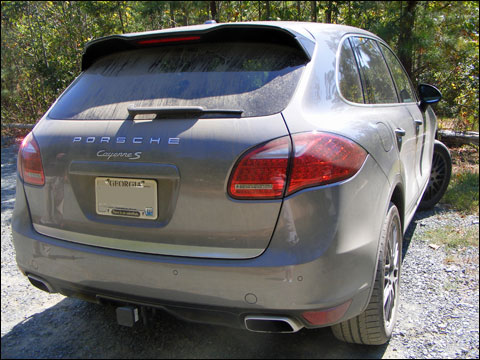
Station 10 saw a report pair of low screamers through the trees, bringing out the English inspiration behind the A-10 American. The shotgun moved quickly, as you would expect from a lean sidelock.
By Station 12, Mr. Landseadel had really bared his fangs. We were confronted with a far crosser racing toward the trees followed by another crosser, thrown from a tower, which made a bee dive for a ravine. With low light and high speed, there was zero margin for error.
It would’ve been nice to wrap up our Sporting Clays on the Bourbon Trail road trip with a series of lollipop targets – just as sort of a feel-good gesture. Yet, in the end, we still managed to drive the Porsche Cayenne S up the narrow gravel road with big smiles on our faces as we made our way home.
Irwin Greenstein is the Publisher of Shotgun Life. You can reach him at letters@shotgunlife.com.
Useful resources:
Previously published instalments of “Sporting Clays on the Bourbon Trail”:
Sporting Clays on the Bourbon Trail: Part I, Nemacolin
Sporting Clays on the Bourbon Trail: Part II, Elk Creek Hunt Club
Sporting Clays on the Bourbon Trail: Part III, White Dog Mash and Other Delights
Sporting Clays on the Bourbon Trail: Part IV, The Rockcastle Shooting Center
Sporting Clays on the Bourbon Trail: Part V, Blackberry Farm
Sporting Clays on the Bourbon Trail: Part VI, The Inn on Biltmore Estate
Useful resources:
The Central Virginia Sporting Clays web site

Irwin Greenstein is Publisher of Shotgun Life. Please send your comments to letters@shotgunlife.com.


Comments